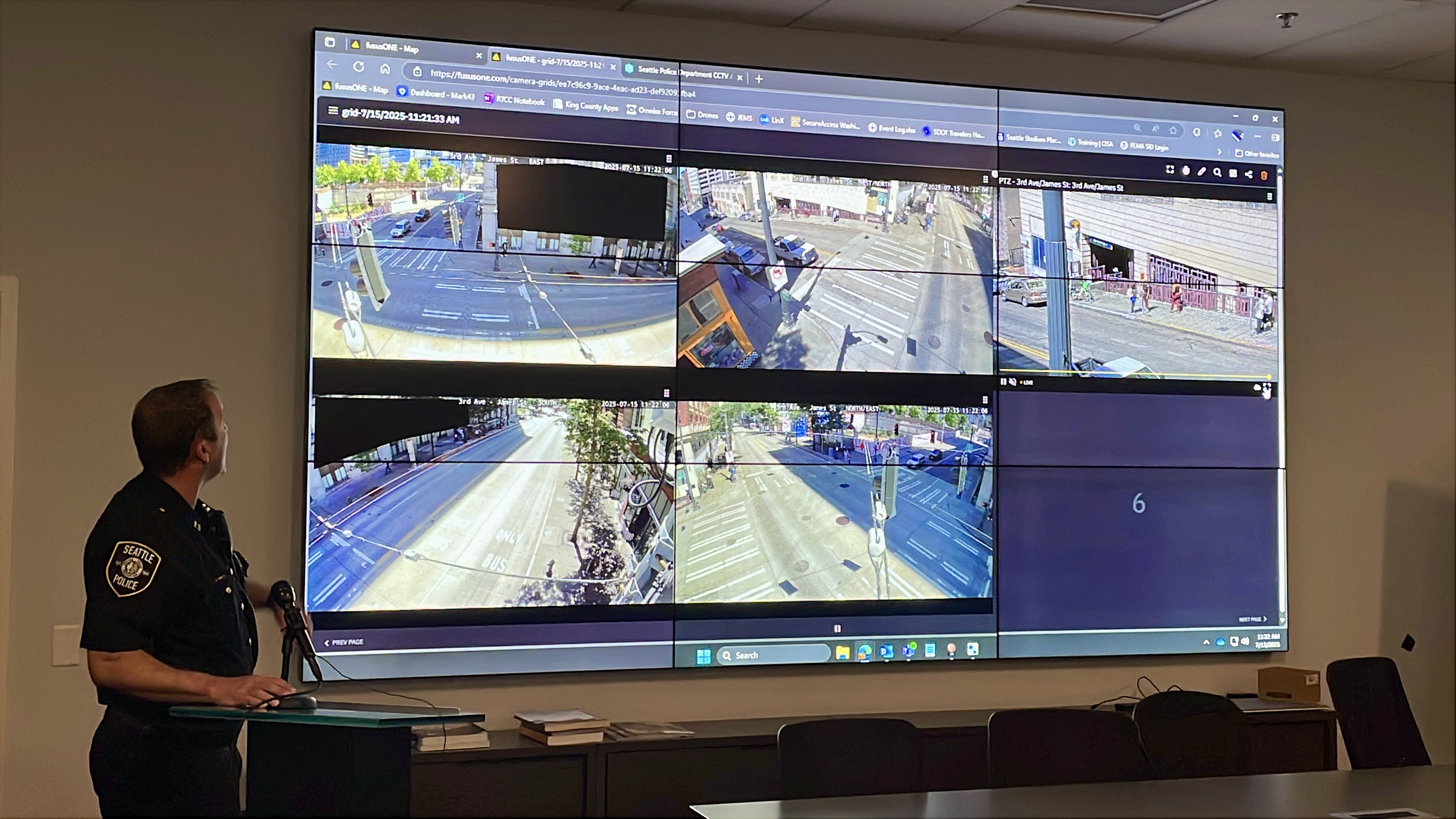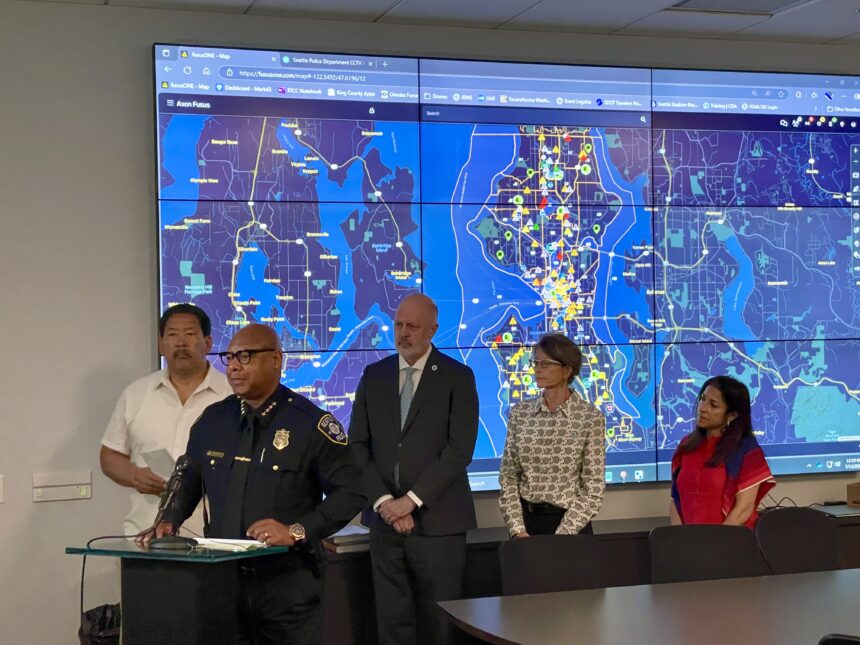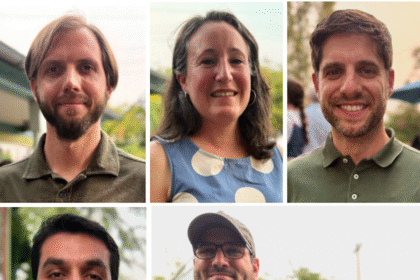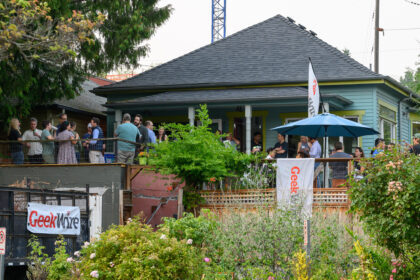The Seattle Police Department has formally launched a new high-tech operations center designed to help officers fight crime in real time — and is already seeing results, according to city officials.
Mayor Bruce Harrell, SPD Chief Shon Barnes, and city councilmembers hosted a media event Tuesday touting the new Real Time Crime Center, located inside the police headquarters in downtown Seattle.
The center pulls live footage and data from surveillance cameras and other sources into a centralized command room staffed by analysts nearly 20 hours a day. It supports ongoing investigations by pushing video and incident data directly to patrol units and detectives. Analysts can provide live updates and still images of suspects, a capability SPD says helps support its “precision policing” model.
In just under two months, the system has been used in 600 incidents and is actively aiding 90 investigations, according to city officials.
Harrell called the system a “game changer.”
“This is not a panacea, but it does mean we are fulfilling our promise to use every tool available to improve public safety,” he said.
Not everyone is on board with the new effort, which takes advantage of new police-owned CCTV cameras in the downtown core, along Aurora Ave., and in the Chinatown-International District.
ACLU of Washington last year cited “evidence that these technologies do not reduce violent crime and disproportionately harm communities of color.”
“SPD’s use of RTCC software would make it possible for ICE and out-of-state agencies to access data to arrest immigrants and prosecute people coming to Seattle for reproductive and gender-affirming healthcare while bypassing state protections,” ACLU said in a statement in September.
Captain James Britt said data requests from outside agencies — including federal law enforcement — are screened and must comply with state and local laws. “We control where all of our data goes,” he said.

The center, part of a broader crime prevention technology pilot launched under Harrell, uses software called Fusus built by Axon, the police body cam and taser giant that has an engineering office in Seattle. Axon last year acquired Fusus, a leader in real-time crime center technology.
Britt said the software does not use facial recognition, gait analysis, or other biometric tools — but it can search video using keywords like “red shirt” or “black Toyota,” and it flags potential matches for human review.
The city says it completed required Surveillance Impact Reports and has launched a third-party academic evaluation led by researchers at the University of Pennsylvania.
In a follow-up interview with GeekWire, Britt emphasized that the system is not about replacing people — but rather enhancing staff capabilities. SPD has been increasing staffing after losing officers in recent years.
“All this technology has an incredible capability to change the way we do policing — to make us better, faster, and more precise at what we do,” Britt said. “That’s really what those of us in the uniform really want.
“We want to be able to do our jobs better — not more aggressively, not more broadly. We want to do what we do, but we want to do it better, and this helps us do that.”
The center actually launched a decade ago but the initial version wasn’t as integrated into real-time policing.
A new legislative proposal would expand CCTV surveillance to Capitol Hill’s nightlife area, SODO near the stadiums, and neighborhoods around Garfield and Nova High Schools.
Harrell has supported a controversial gunshot detection technology system but said last year that the city would not allocate money to the initiative.
Read the full article here









